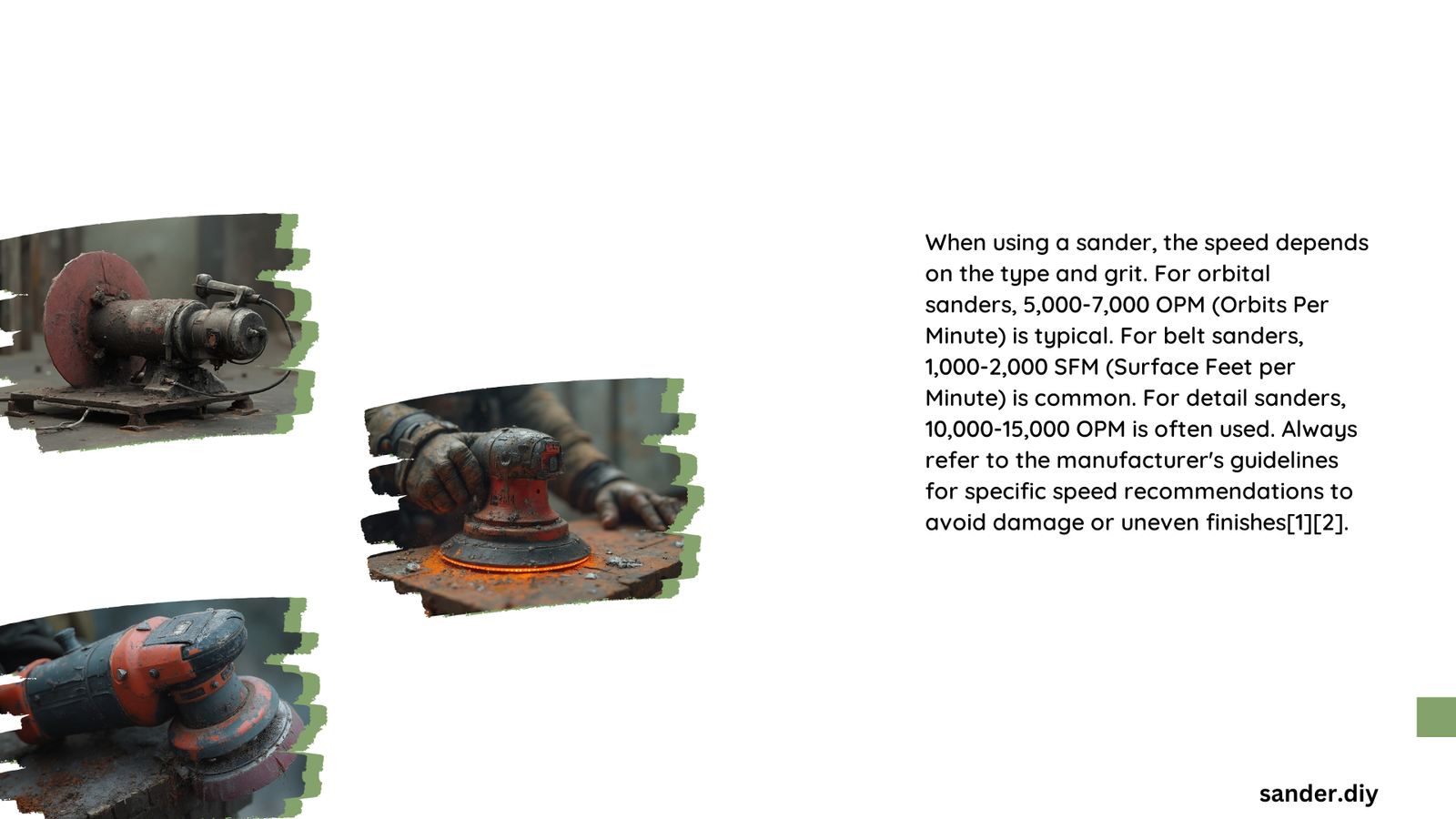Navigating the right speed for your sander can dramatically impact your project’s quality. Whether you’re working with wood, metal, or delicate surfaces, understanding the optimal RPM (revolutions per minute) is crucial. Different materials and tasks require specific speed settings, ranging from 3,000 to 10,000 RPM, with techniques that balance speed, pressure, and surface interaction to achieve professional-grade results.
What Speed Should You Use for Different Materials?
Wood Sanding Speed Recommendations
For wood surfaces, most experts recommend the following speed ranges:
| Material Type | Recommended RPM | Technique Notes |
|---|---|---|
| Rough Wood | 8,000-10,000 RPM | Aggressive removal |
| Fine Woodworking | 6,000-8,000 RPM | Smooth finishing |
| Delicate Veneer | 4,000-6,000 RPM | Light touch required |
Key Factors Influencing Sander Speed
- Material Hardness
- Softer woods: Lower speeds
- Hardwoods: Higher speeds
-
Exotic woods: Moderate, controlled speeds
-
Sandpaper Grit
- Coarse grits (40-80): Higher speeds
- Medium grits (100-150): Moderate speeds
- Fine grits (180-220): Lower speeds
How Fast Should You Move the Sander?
The movement speed is equally important as the RPM setting:
- Ideal Movement Rate: 1 inch per second
- Pressure Application: Light, consistent pressure
- Overlap Technique: 50% overlap between sanding passes
Metal and Paint Sanding Considerations
For metal and painted surfaces, speed requirements differ:
- Metal Sanding: 4,000-8,000 RPM
- Paint Removal: 8,000-10,000 RPM
- Automotive Refinishing: 5,000-7,000 RPM
Avoiding Common Sanding Speed Mistakes

What Happens at Incorrect Speeds?
- Too Fast:
- Potential surface damage
- Excessive heat generation
-
Premature sandpaper wear
-
Too Slow:
- Inefficient material removal
- Increased risk of uneven surfaces
- Extended project time
Pro Tips for Optimal Sanding
- Always start at lower speeds and gradually increase
- Use variable speed settings for maximum control
- Replace sandpaper when it becomes worn
- Clean sander and surface between passes
Sander Type-Specific Speed Guidelines
Random Orbital Sanders
- Typical Speed Range: 3,000-10,000 RPM
- Best for: Wood, paint, light metal work
Belt Sanders
- Speed Range: 900-1,600 SFPM
- Best for: Heavy-duty, large surface removal
Detail Sanders
- Speed Range: 1,000-3,000 RPM
- Best for: Intricate, hard-to-reach areas
Final Speed Selection Checklist
- Identify material type
- Select appropriate grit
- Choose initial speed setting
- Test on scrap material
- Adjust speed as needed
Remember: Practice and experience will help you develop an intuitive sense of the right sander speed for each unique project.
Safety Considerations
- Wear protective eyewear
- Use dust collection systems
- Maintain consistent hand movement
- Avoid applying excessive pressure
Reference:
– Woodworker’s Journal Sander Guide
– National Abrasives Sanding Techniques
– Professional Woodworking Resources
